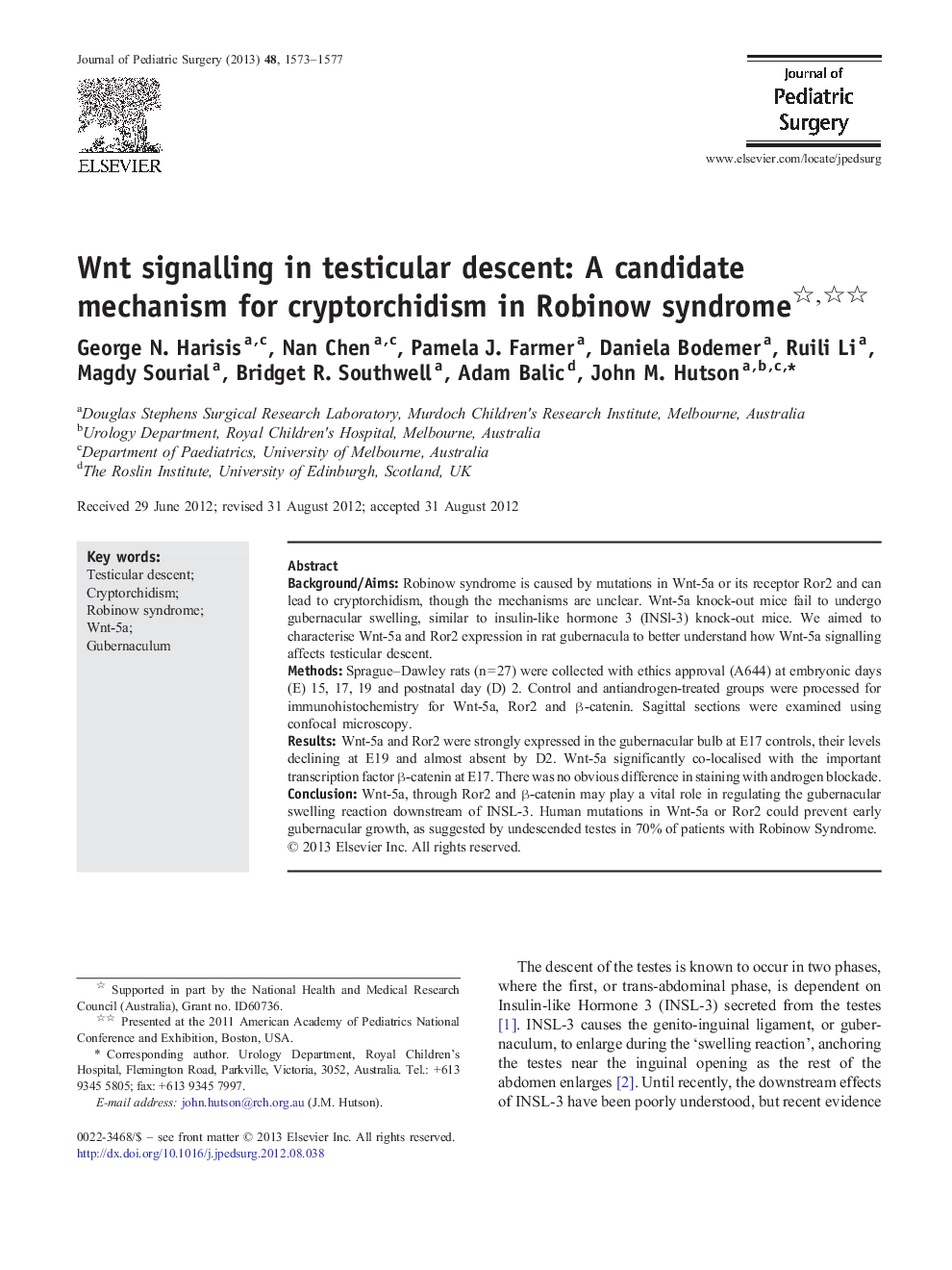| کد مقاله | کد نشریه | سال انتشار | مقاله انگلیسی | نسخه تمام متن |
|---|---|---|---|---|
| 6217085 | 1273748 | 2013 | 5 صفحه PDF | دانلود رایگان |

Background/AimsRobinow syndrome is caused by mutations in Wnt-5a or its receptor Ror2 and can lead to cryptorchidism, though the mechanisms are unclear. Wnt-5a knock-out mice fail to undergo gubernacular swelling, similar to insulin-like hormone 3 (INSl-3) knock-out mice. We aimed to characterise Wnt-5a and Ror2 expression in rat gubernacula to better understand how Wnt-5a signalling affects testicular descent.MethodsSprague-Dawley rats (n = 27) were collected with ethics approval (A644) at embryonic days (E) 15, 17, 19 and postnatal day (D) 2. Control and antiandrogen-treated groups were processed for immunohistochemistry for Wnt-5a, Ror2 and β-catenin. Sagittal sections were examined using confocal microscopy.ResultsWnt-5a and Ror2 were strongly expressed in the gubernacular bulb at E17 controls, their levels declining at E19 and almost absent by D2. Wnt-5a significantly co-localised with the important transcription factor β-catenin at E17. There was no obvious difference in staining with androgen blockade.ConclusionWnt-5a, through Ror2 and β-catenin may play a vital role in regulating the gubernacular swelling reaction downstream of INSL-3. Human mutations in Wnt-5a or Ror2 could prevent early gubernacular growth, as suggested by undescended testes in 70% of patients with Robinow Syndrome.
Journal: Journal of Pediatric Surgery - Volume 48, Issue 7, July 2013, Pages 1573-1577